CD, CD Çalar, DVD, DVD Çalar, SACD, LP, Plak Çeşitleri ve Fiyatları

XP Music Futures is now in its fourth year. We visited the conference to find out more.
What is XP Music Futures?
Now in its fourth year, XP Music Futures is a three-day music conference organized by MDLBEAST. This year’s edition included over 286 speakers for the daytime seminars and 150 artists for the nighttime performances.
The event is the conference arm and warm up act for the much larger SOUNDSTORM festival taking place this weekend featuring the likes of Jamie Jones, Anfisa Letyago, Black Coffee, Brawther, Chris Liebing, Cosmicat, Franky Wah, Joseph Capriati, Reinier Zonnerfeld and Solumun to name a few.
Here are five things we learned on our visit.
The Revival of Microtuning
Microtuning, for a good reason, has been a growing focus for musicians as well as the pro-audio industry. There’s a train of thought that despite being made in good faith, as a lot of companies try to pull it off, the results lack lustre, with instruments and sample packs either too few in quantity or quality.
The tides feel like they are turning, however. With Ableton Live 12, the Berlin-based DAW and Push developer now gives you the ability to conform the program to any microtonal or non-western scale you desire, and the DAW applies this scale to all MIDI clips in your project. Plus, it sounds incredible on overtones. It feels like Ableton has been listening and now delivering.
With that in mind, the microtuning panel was fascinating. It’s commendable to the programmers that they chose to highlight a hot topic in music production; one so specific to the region. Despite being in Arabic, as it really should be given the location, from our questions to the panellists and the helpful slides and audio examples, it was easy to take away that there is febrile discussion on the topic as well as developments commercially and creatively with the scale system, which is exciting.
The workshop tallied with a conversation we also had with a local developer we met who’s creating a sample pack and Kontakt instrument company. It will focus on the region’s sounds, made by the people of the region and aimed at electronic music producers.
This could be the start of something very interesting in production software from emerging markets, specialising in regional sounds—a much-underrepresented space.
Learn more about microtuning.
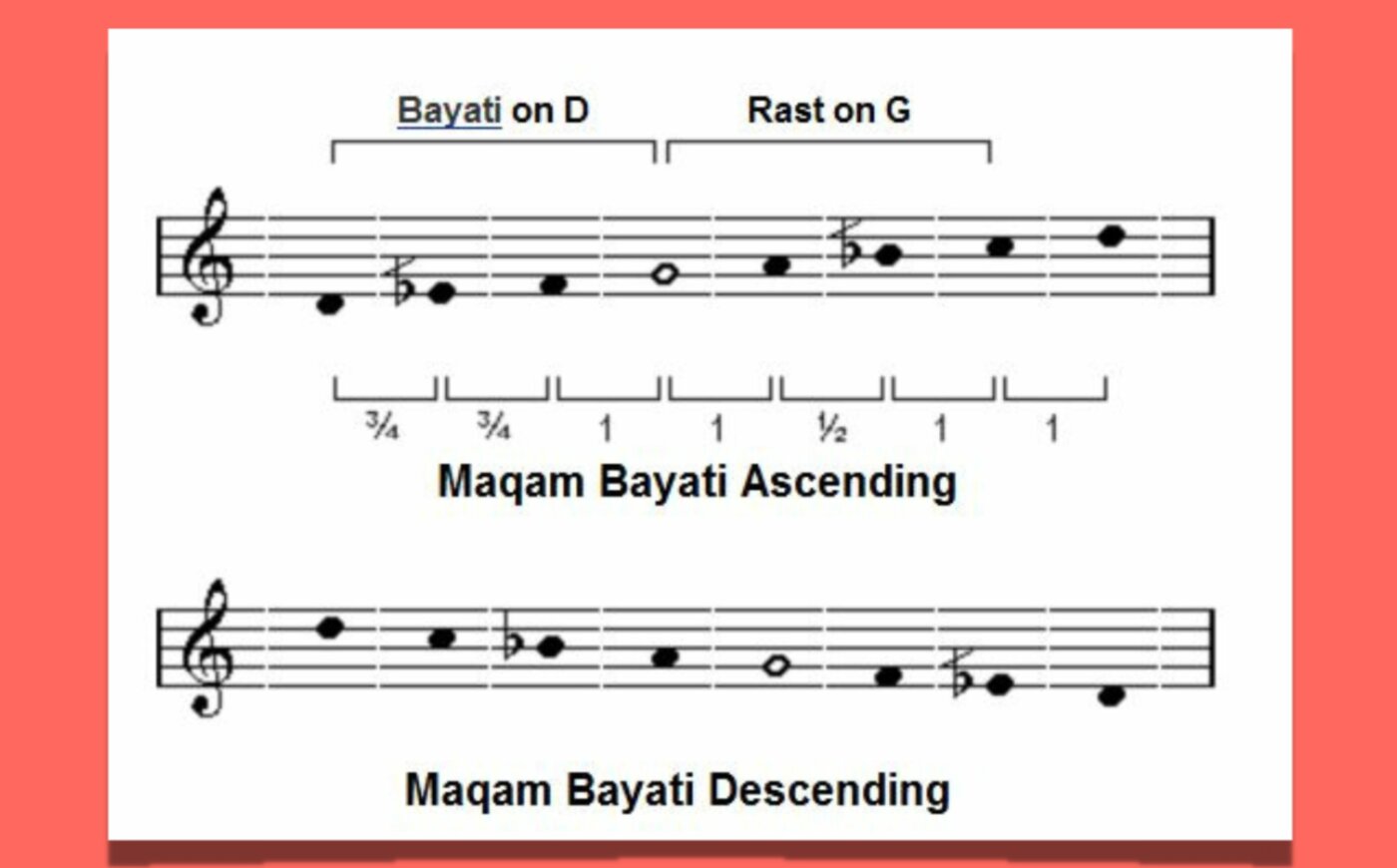
[advert]
Why aren’t more artists thinking about Anghami?
With Spotify having a bad recent run of press, it’s refreshing to hear the success story of Anghami in the region.
Their co-founder, Eddy Maroun, shared his story of having started Anghami in 2014 with a focus on local music, supporting regional talent across the continent, and being rewarded as the region’s leading streaming site.
But anyone can use Anghami, and the numbers seem attractive. According to iMusician, it pays a great deal better than Spotify whilst simultaneously getting your music in front of a different audience. iMusican report, you only need 400 -500 streams to make $1.
To that end, it’s surprising that Anghami is not mentioned more often in Western music media, especially against widespread disappointment with other platforms, with even artists such as Skee Mask choosing to remove their music outright.
It sounds glib, but hearing the stories of the support Anghami has given artists suggests they’re in the business of building relationships, and as far as we can tell, it’s working for them.
Find out more about Anghami.
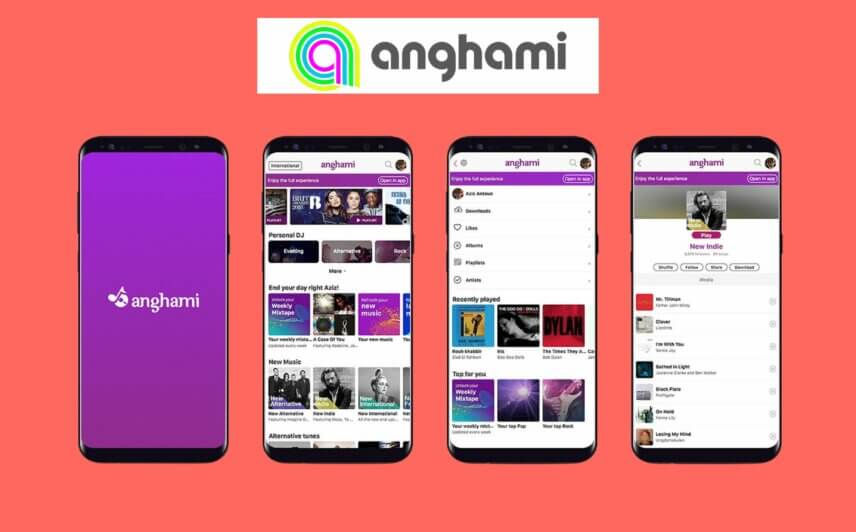
[advert]
Selectors for XP Night
The conference switches to a dancefloor in the evening with performances in all corners across seven event stages. The DJs were a mix of local artists and overseas artists, including Satoshi Tomiie, Joyce Muniz and Dana Rush, with the overall mix of genres varied. Despite all the dance floors being well attended, the hip-hop arena was packed from start to finish.
Curiously, despite our best efforts, Shazam returned blanks on most of the tracks we tried to ID. Perhaps they were live mixes, but the on-stage set-up did not suggest as much. Perhaps they are unreleased, or simply Shazam is not as prevalent in emerging markets.
What stood out, however, was it was certifiably hip-hop, especially the current 140 BPM sound. And the Eastern musical influences were included but not in a cliche or cheap manner. It sounded authentic, at least to our diatonic ears. It was interesting, and simply put, the crowd loved it.
On a human level, it was also reassuring to see so many Saudi youths partying. This was a local audience, unlike neighbouring countries such as the UAE, where dancefloors are filled with expats. In a country working to change its image abroad, history tells us that the youth almost always drives change. Music can change the world; perhaps this is the beginning of a broader societal impact.
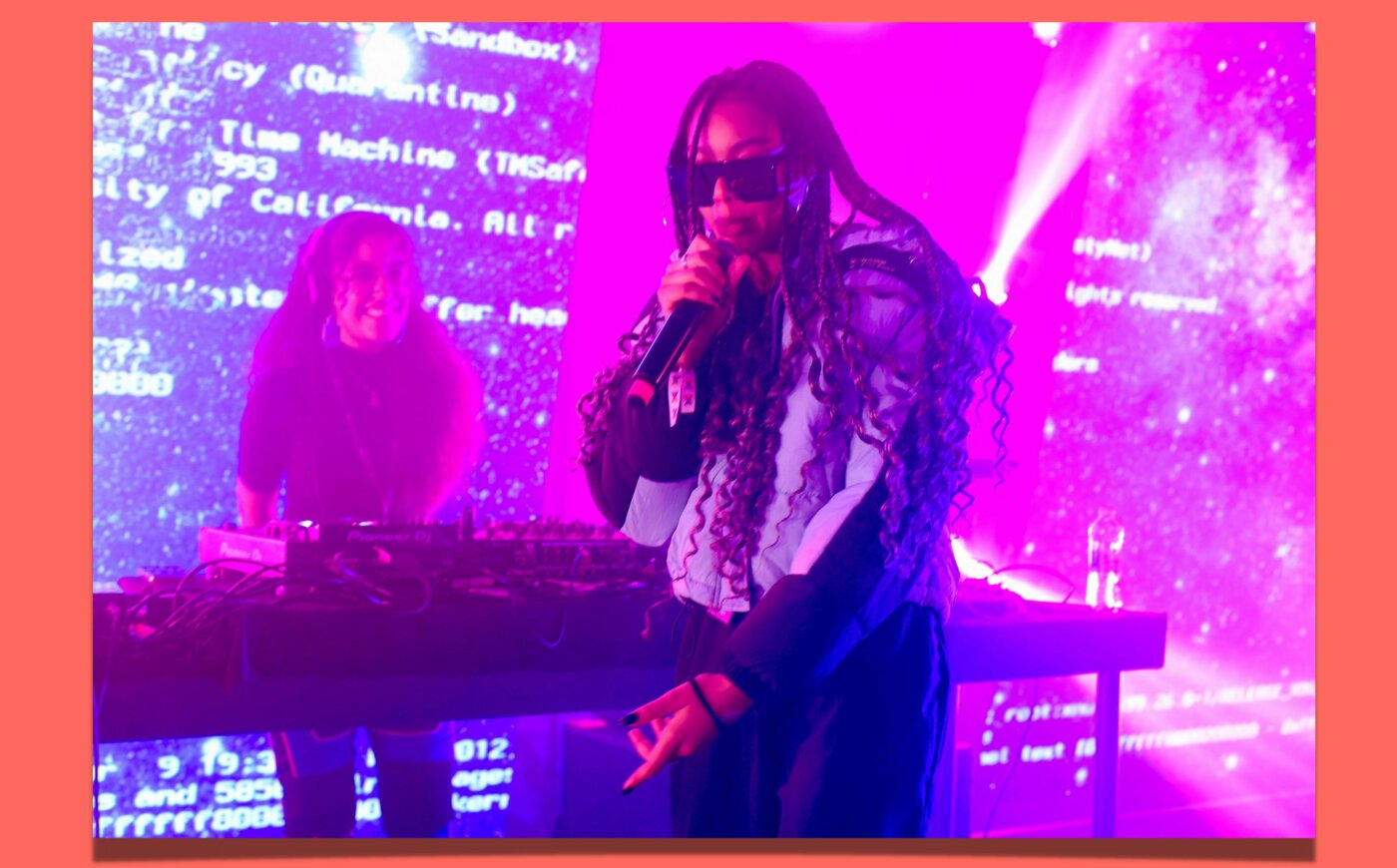
[advert]
Africa and the Middle East are forming strong bonds
As the conference more broadly showcased local education initiatives, with panels in Arabic and local acts being the nighttime’s primary focus, it was great to see emerging markets support one another. In other words, it’s not all about them.
‘Unpacking the Rising Sounds of Africa’ hosted by Charlotte Bwana, currently the Vice President of Brand Strategy and Marketing for Audiomack in Africa, explored Africa’s vibrant and ever-evolving music scene.
The sounds of African music have indeed travelled well this past decade. Perhaps the forerunner is amapiano, which blends house, jazz, and kwaito elements, reflecting the power of cultural fusion. Of course, there’s also a huge Afrobeat following as well, particularly strong in the UK and dominating the charts. Alongside these exciting and fast-moving genres, music festivals such as Nyege Nyege and Oasis, to name just two, are driving a new energy in the music industry.
The panel showcased how a significant musical change is developing in Africa. In Europe, we may take the rich electronic music scene for granted and maybe overlook how visionaries in developing music markets are sowing the seeds for the future. To hear from them directly, to hear their story, and, in particular, to hear the feedback from those who attended The Africa Rising Music Conference suggests electronic music is breaking down barriers and growing exponentially.
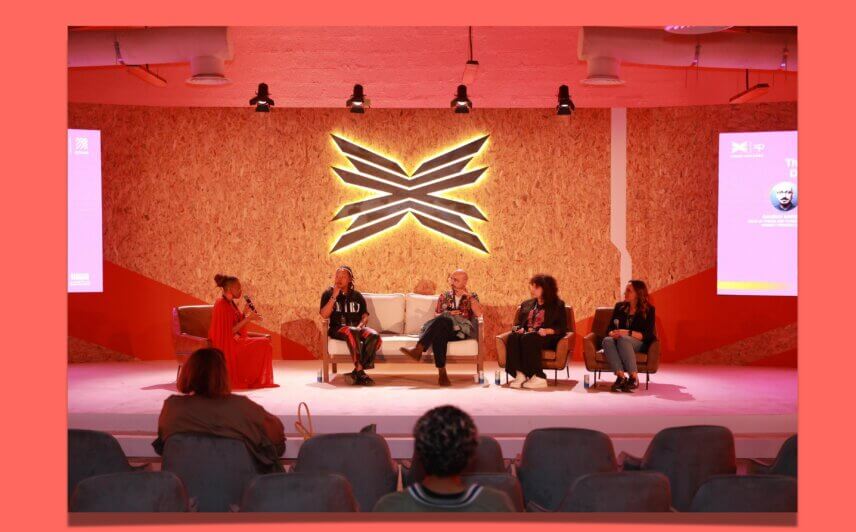
Find out about The Africa Rising Music Conference.
[advert]
Education Education Education
The most heartwarming aspect of XP was the Kids Klub. We could be wrong, but we can’t think of another conference where kids are not only welcomed but educated and entertained. It’s all light, but that’s the point, especially as kids were mostly under five.
The education focused on learning the Oud, in individual or group classes, being shown how to make an instrument and learning music notation also. And it was not solely for kids, adults were encouraged to take part too.
The theme of education mirrors what the Saudi Music Commission is developing. As you might expect, with the resources and ambition, no stone is left unturned with a humongous road map of production colleges, workshops, certified degrees, studios and more being built or already built to help facilitate the growing demand for music education in the region.
Despite SOUNDSTORM grabbing all the headlines, seeing the region’s grassroots investment in music production and DJing is encouraging.
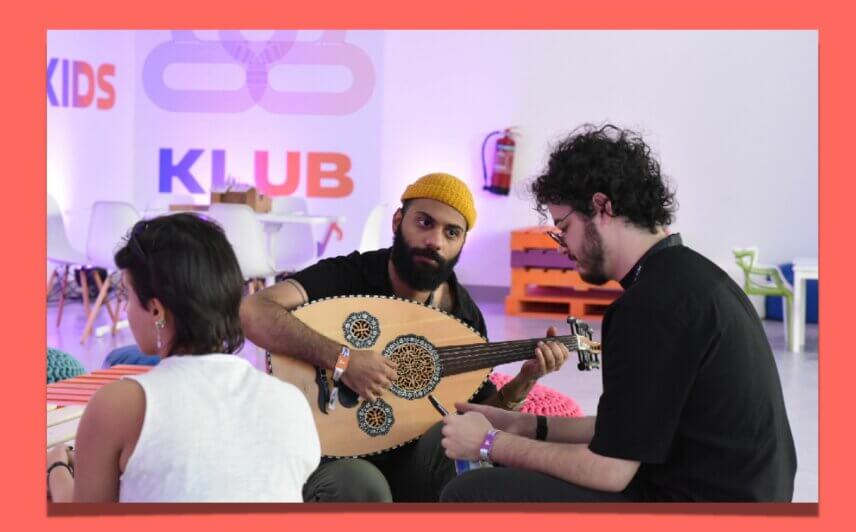
Find out more about The Music Commission.
Find out more about XP Music Futures.
[social-links heading=”Follow Attack Magazine” facebook=”https://www.facebook.com/attackmag” twitter=”https://twitter.com/attackmag1″ instagram=”https://www.instagram.com/attackmag/” youtube=”https://www.youtube.com/user/attackmag” soundcloud=”https://soundcloud.com/attackmag” tiktok=”https://www.tiktok.com/@attackmagazine”]
[product-collection]
attackmagazine

XP Music Futures is now in its fourth year. We visited the conference to find out more.
What is XP Music Futures?
Now in its fourth year, XP Music Futures is a three-day music conference organized by MDLBEAST. This year’s edition included over 286 speakers for the daytime seminars and 150 artists for the nighttime performances.
The event is the conference arm and warm up act for the much larger SOUNDSTORM festival taking place this weekend featuring the likes of Jamie Jones, Anfisa Letyago, Black Coffee, Brawther, Chris Liebing, Cosmicat, Franky Wah, Joseph Capriati, Reinier Zonnerfeld and Solumun to name a few.
Here are five things we learned on our visit.
The Revival of Microtuning
Microtuning, for a good reason, has been a growing focus for musicians as well as the pro-audio industry. There’s a train of thought that despite being made in good faith, as a lot of companies try to pull it off, the results lack lustre, with instruments and sample packs either too few in quantity or quality.
The tides feel like they are turning, however. With Ableton Live 12, the Berlin-based DAW and Push developer now gives you the ability to conform the program to any microtonal or non-western scale you desire, and the DAW applies this scale to all MIDI clips in your project. Plus, it sounds incredible on overtones. It feels like Ableton has been listening and now delivering.
With that in mind, the microtuning panel was fascinating. It’s commendable to the programmers that they chose to highlight a hot topic in music production; one so specific to the region. Despite being in Arabic, as it really should be given the location, from our questions to the panellists and the helpful slides and audio examples, it was easy to take away that there is febrile discussion on the topic as well as developments commercially and creatively with the scale system, which is exciting.
The workshop tallied with a conversation we also had with a local developer we met who’s creating a sample pack and Kontakt instrument company. It will focus on the region’s sounds, made by the people of the region and aimed at electronic music producers.
This could be the start of something very interesting in production software from emerging markets, specialising in regional sounds—a much-underrepresented space.
Learn more about microtuning.

[advert]
Why aren’t more artists thinking about Anghami?
With Spotify having a bad recent run of press, it’s refreshing to hear the success story of Anghami in the region.
Their co-founder, Eddy Maroun, shared his story of having started Anghami in 2014 with a focus on local music, supporting regional talent across the continent, and being rewarded as the region’s leading streaming site.
But anyone can use Anghami, and the numbers seem attractive. According to iMusician, it pays a great deal better than Spotify whilst simultaneously getting your music in front of a different audience. iMusican report, you only need 400 -500 streams to make $1.
To that end, it’s surprising that Anghami is not mentioned more often in Western music media, especially against widespread disappointment with other platforms, with even artists such as Skee Mask choosing to remove their music outright.
It sounds glib, but hearing the stories of the support Anghami has given artists suggests they’re in the business of building relationships, and as far as we can tell, it’s working for them.
Find out more about Anghami.

[advert]
Selectors for XP Night
The conference switches to a dancefloor in the evening with performances in all corners across seven event stages. The DJs were a mix of local artists and overseas artists, including Satoshi Tomiie, Joyce Muniz and Dana Rush, with the overall mix of genres varied. Despite all the dance floors being well attended, the hip-hop arena was packed from start to finish.
Curiously, despite our best efforts, Shazam returned blanks on most of the tracks we tried to ID. Perhaps they were live mixes, but the on-stage set-up did not suggest as much. Perhaps they are unreleased, or simply Shazam is not as prevalent in emerging markets.
What stood out, however, was it was certifiably hip-hop, especially the current 140 BPM sound. And the Eastern musical influences were included but not in a cliche or cheap manner. It sounded authentic, at least to our diatonic ears. It was interesting, and simply put, the crowd loved it.
On a human level, it was also reassuring to see so many Saudi youths partying. This was a local audience, unlike neighbouring countries such as the UAE, where dancefloors are filled with expats. In a country working to change its image abroad, history tells us that the youth almost always drives change. Music can change the world; perhaps this is the beginning of a broader societal impact.

[advert]
Africa and the Middle East are forming strong bonds
As the conference more broadly showcased local education initiatives, with panels in Arabic and local acts being the nighttime’s primary focus, it was great to see emerging markets support one another. In other words, it’s not all about them.
‘Unpacking the Rising Sounds of Africa’ hosted by Charlotte Bwana, currently the Vice President of Brand Strategy and Marketing for Audiomack in Africa, explored Africa’s vibrant and ever-evolving music scene.
The sounds of African music have indeed travelled well this past decade. Perhaps the forerunner is amapiano, which blends house, jazz, and kwaito elements, reflecting the power of cultural fusion. Of course, there’s also a huge Afrobeat following as well, particularly strong in the UK and dominating the charts. Alongside these exciting and fast-moving genres, music festivals such as Nyege Nyege and Oasis, to name just two, are driving a new energy in the music industry.
The panel showcased how a significant musical change is developing in Africa. In Europe, we may take the rich electronic music scene for granted and maybe overlook how visionaries in developing music markets are sowing the seeds for the future. To hear from them directly, to hear their story, and, in particular, to hear the feedback from those who attended The Africa Rising Music Conference suggests electronic music is breaking down barriers and growing exponentially.

Find out about The Africa Rising Music Conference.
[advert]
Education Education Education
The most heartwarming aspect of XP was the Kids Klub. We could be wrong, but we can’t think of another conference where kids are not only welcomed but educated and entertained. It’s all light, but that’s the point, especially as kids were mostly under five.
The education focused on learning the Oud, in individual or group classes, being shown how to make an instrument and learning music notation also. And it was not solely for kids, adults were encouraged to take part too.
The theme of education mirrors what the Saudi Music Commission is developing. As you might expect, with the resources and ambition, no stone is left unturned with a humongous road map of production colleges, workshops, certified degrees, studios and more being built or already built to help facilitate the growing demand for music education in the region.
Despite SOUNDSTORM grabbing all the headlines, seeing the region’s grassroots investment in music production and DJing is encouraging.

Find out more about The Music Commission.
Find out more about XP Music Futures.
[social-links heading=”Follow Attack Magazine” facebook=”https://www.facebook.com/attackmag” twitter=”https://twitter.com/attackmag1″ instagram=”https://www.instagram.com/attackmag/” youtube=”https://www.youtube.com/user/attackmag” soundcloud=”https://soundcloud.com/attackmag” tiktok=”https://www.tiktok.com/@attackmagazine”]
[product-collection]